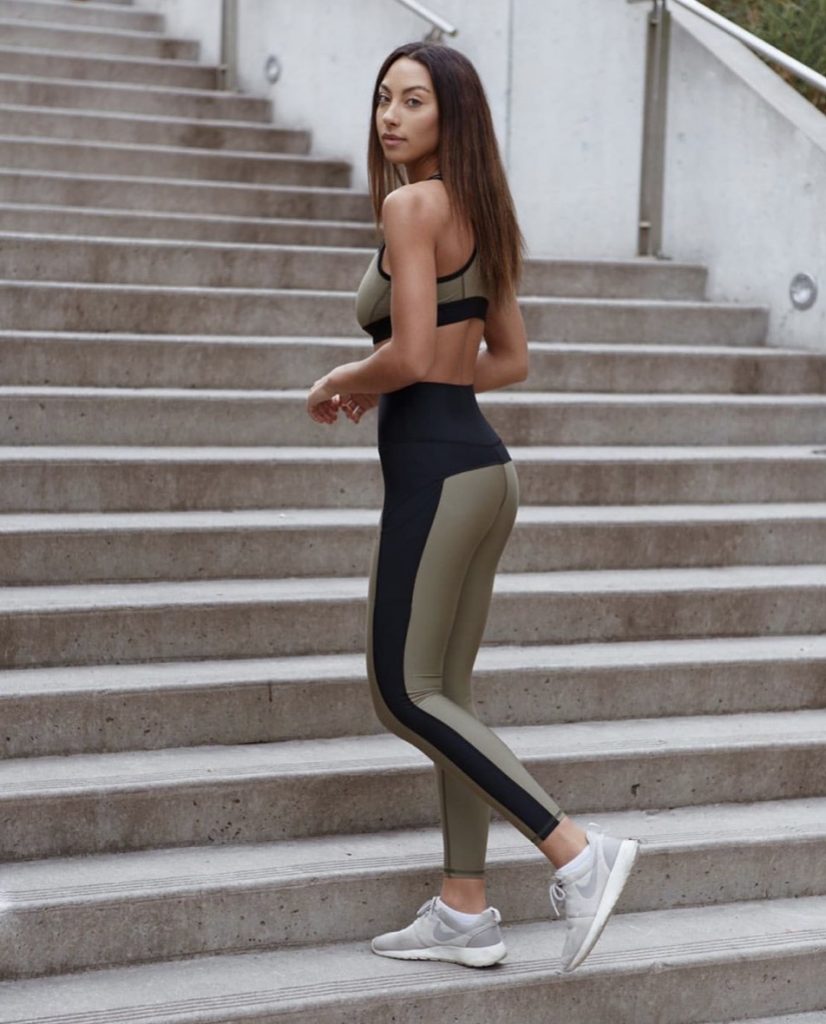It almost defeats the purpose of (finally) getting your ass in gear and working out if your workout gear could actually negatively affect your health and wellbeing. A small but growing body of research has shown that many sportswear brands produce gear that is filled with chemicals and toxins that have the potential to do some damage in the long-run, no matter how in shape you are.
As the world around us gets increasingly “woke,” the informed and passionate modern consumer is turning to alternatives like reusable grocery bags, steel water bottles, clean eats, and organic makeup and beauty products.
One thing that many likely haven’t questioned, however, is their stylish workout gear (or the clothes on their backs in general.)

Somewhere in the past two decades since Lululemon first hit the scene to fuse function and fashion with its figure-flattering workout gear, workout clothing has been given a whole new meaning. With the rising popularity of athleisure, yoga pants are just as acceptable as jeans in environments outside of the gym or yoga studio. But the gym clothes you practically live in probably aren’t as clean as you may think they are.
Two Greenpeace reports on chemical content in sportswear found that garments from major brands contained known hazardous chemicals like phthalates, PFCs, dimethylformamide (DMF), nonylphenol ethoxylates (NPEs), and nonylphenols (NPs).
All these chemicals are easily absorbed into the body from friction, heat, and sweat, and could have damaging consequences.
A Swedish report found that 10 per cent of 2,400 chemicals contained within fabrics could pose a risk to health. A link has been found between harmful toxins and diseases like cancer, liver damage, and skin ailments. Yikes!
While the potential for harmful chemicals isn’t exclusive to workout gear, the presence of such things in gym and sports apparel is more alarming. This is because it sits and sticks to the skin, and involves both a lot of friction on the skin and a high-moisture environment. It’s also more artificial than other types of clothing, and traditionally relies on harsh chemicals to account for stretching, moisture absorption, and sweating.

In recent years, however, a handful of “clean” workout gear brands have hit the market.
One is Toronto-based TMPL Sportswear, which was created by Nathan Shriver and Basil Farano and produces stylish workout gear that’s better for the body and the planet. “Both Nathan and myself spent a number of years working in the sportswear industry,” said Farano. “We witnessed firsthand some of the challenges the industry faced when it came to environmental and human health. We saw the dangerous manufacturing processes, which put the planet, the people making the products, and the wearer in danger.”
TMPL Sportswear is just one industry pioneer; Farano says the shift has already started.

“Consumers are more aware than ever of the environmental and human health issues that face everyone today. It’s because of this awareness and concern that consumers are directing more of their purchasing decisions towards brands that are focused on being responsible to the environment and to the customer’s health,” he says. “We certainly see it with the response to TMPL Sportswear, which has been phenomenal so far. We are even seeing more and more stories in the media about the dangerous effects of the chemicals and toxins found in clothing. With all the health issues these toxins are causing, most health minded consumers are focused as much on what goes on their bodies as they are to what goes in their bodies.”
Like many organic and clean alternatives, creating them isn’t without its challenges.
“The biggest challenge was finding fabric mills that could create technical, performance fabrics without the dangerous toxins and dyes used in traditional manufacturing,” said Farano. “After years of research, we found a small number of Italian fabric mills committed to the highest standards in environmental and human responsibility during the manufacturing processes of these performance fabrics. These fabrics aren’t cheap, but as a brand and conscious company, we are committed to providing only the most advanced and healthy products to our customers.”

The hope is that a growing number of other apparel brands follow suit.
In the meantime, you can have a healthier relationship with your gym apparel by doing a few extra things. Try washing it before wearing for the first time, washing it after each wear, purchasing clothing made from natural fabrics, and steering clear of technical fabrics and their innovative claims, as such fabrics are often chemical-filled synthetics.
Articles You May Also Be Interested In:
8 Plus Size Activewear Brands To Know About
Fitness Studio Owners Explain Why Classes Are So Expensive
9 Places To Score Discounted Or Free Fitness Classes In Toronto
I Tried Thrift Store Shopping For Workout Gear – Here’s How It Went
From Bars And Restaurants To Retail: The Changing Face Of The Gym
